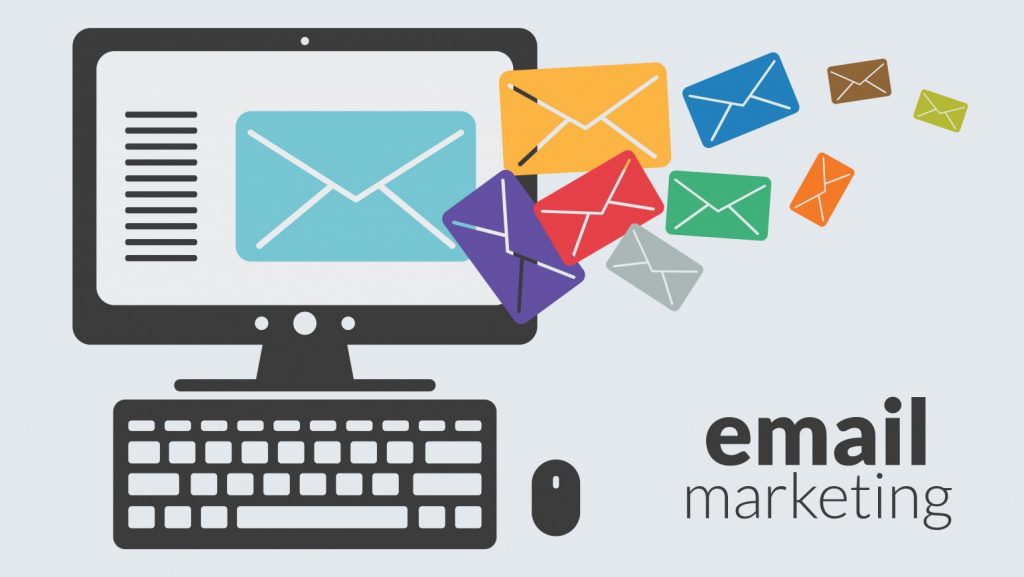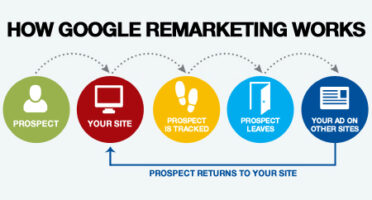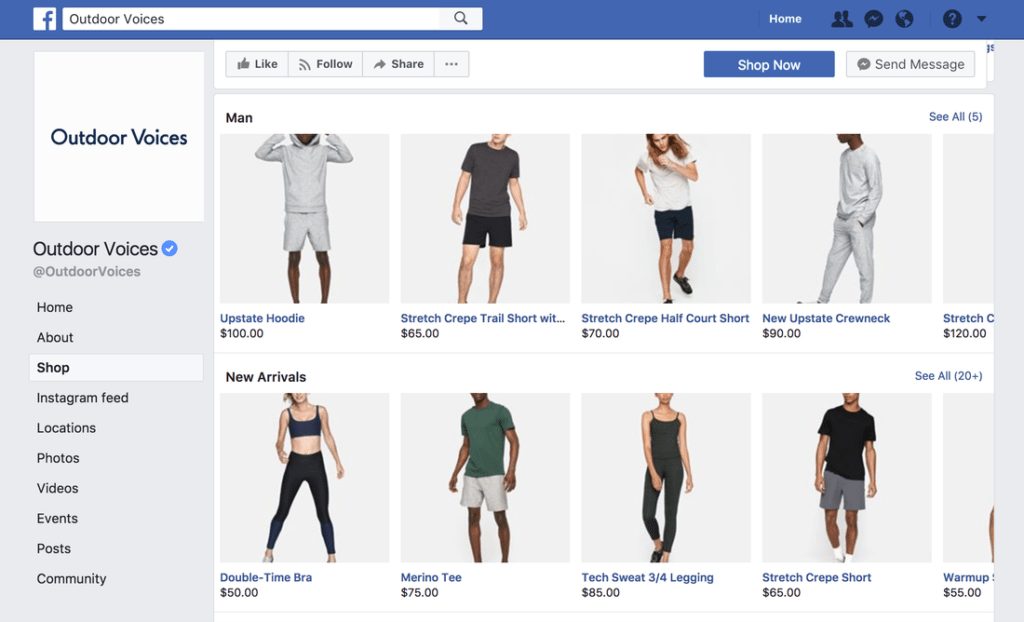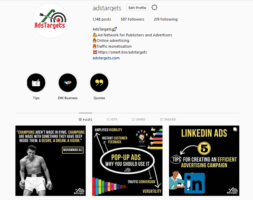Online business or e-business refers generically to all activities of economic interest that may take place through the Internet and other telematic networks.
Setting up and managing an online business can be a really tough challenge.
The competition is potentially endless, and reaching your target, or converting simple contacts into high-quality customers, can sometimes feel like climbing Everest.
But there is something that all online businesses have in common (regardless of size or merchandise), and that is a strategy and advertising ideas to be put in place.

What makes the difference can be those small details that, once put in place in the field, create huge disparities to advertise e-business online in terms of results.
What we offer you is a shortlist of fifteen targeted advertising ideas or advertisement ideas, perfect for getting your online business off the ground.
Table of Contents
Toggle1. Make use of Email marketing
Email marketing is crucial for an online business and to conduct it effectively you need to have a mailing list of users targeted with your business.
There is no better tool to establish initial contact with people interested in what you sell, so a mailing list must be built. Yes, but how?
First of all, make sure you have email address collection forms all over your site: your visitor should meet them, not be forced to look for them.
Create an offer landing page that includes the e-mail, and other forms strategically placed in the most popular places on your site.
Once this is done, add an exit intent pop-up to your site that will only appear when your visitor is about to leave the site, and if it’s well designed you’ll get their email before you lose sight of them.
Once you get that, you can then contact him at any time with your best offer or perhaps one designed especially for him. Of course, the pop up itself is not enough: you need to give him a good reason to leave his email: a discount, extra content or anything else that makes him remember you when you write to him.
The important thing, remember, is to start building your mailing list.

It is also as important to be able to choose your promotion carefully as it is to modulate the frequency of messages so that they are not intrusive, inappropriate or of little interest to the recipient, in other words, at risk of spam.
Email marketing responds, more generally, to two different purposes.
The company aims, on the one hand, to achieve sales targets (i.e., generate conversions in a short time) and, on the other, to develop and maintain relationships with its contacts over time, whether existing or potential customers, partners, suppliers or various other stakeholders.
2. Make Video and Tutorials
Not unlike any other online environment, marketing is also becoming more and more video-oriented: videos are more engaging than written text and perfect for keeping a distracted audience engaged.
That’s why the number of brands whose online marketing strategies and messages focus on video is growing every day.
The advice is to devote yourself to the creation of funny, friendly and affordable videos, and use them to present your products and, in particular, how best to use them.
Videos like “how to…” are among the most popular on the web and if your target will find something posted by your company on YouTube, Vimeo, Facebook, etc., they will certainly remember you when they make a future purchase.
Remember that the ideal video is the one that helps the viewer/customer to solve a problem.
Videos can be made for:
- Educate: to educate the audience on services or content close to the target audience
- Communicating: to communicate the qualities of the products/services offered or to increase brand awareness
- Loyalty: make engaging and interactive videos to keep the relationship with the audience strong
- Selling: to aim at the sale of products or services
3. Make use of Remarketing
Remarketing is a feature that allows you to customize your display ad campaign for users who have previously visited your website and to adapt offers and ads (with dynamic remarketing) to these visitors when they search the web or use apps.
Remarketing, therefore, represents any direct marketing activities that use the collected customer data to obtain information and gather insight that can generate communications with valuable content and relevant and personalized proposals.
Tools such as Facebook or Google allow you to track visitors’ activities on your site to help you optimize your marketing actions towards them. What looks like a simple string of code is actually a real mine of information about your potential customers.
Facebook, for example, allows you to create targeted remarketing campaigns that show specific ads or offer to those visitors to your site who have opened the pages related to certain products, or put them in the cart without finalizing the purchase.

Remarketing is a great advertising idea that allows you to keep the attention on your site, and therefore on your company, attracting those who have left.
This type of announcement increases brand visibility and allows you to show your best offers to people who already know the products and services of your business.
As a result, you won’t have to show up again and it will be easier for you to be recognized to get an immediate conversion from user to a potential customer by filling out the contact form.
This is exactly what remarketing does: it captures your attention to bring you back to a site for which you have already expressed interest, leading you to the purchase.
4. Choose an influencer to work with
In a social world, it is difficult to disregard the involvement of influencers, subjects recognized as “experts” or trend-setters of a certain segment and therefore able to move a large number of preferences.
This is all the more true in the field of e-commerce, where the favourable opinion of an influencer can strengthen the confidence of the prospect, especially if he does not yet know you, in your brand.

Bloggers, Vloggers, Instagrammers and other highly selected audiences can be valuable allies in the launch of a given product and are to be considered privileged targets for product placement, reviews, tests.
The flip side of the coin is that an influencer’s bad judgment can do the same damage as a critic’s sniping at a movie or restaurant!
However, we need to be careful when choosing an influencer: the most suitable for our purposes is not necessarily the one with the most followers, but the one with the most followers in line with our core target audience.
5. Start Blogging
Blogging allows you to generate traffic, build a community, and relate to your customers on a new and higher level.
Creating content that is fun, useful and engaging will allow you to satisfy the curiosity and resolve the doubts of your potential customers and almost without them noticing they are taking a first “tour” within your brand. After that, everything will be easier.

Dedicate to creating guides that show the uses and applications of your products in a real-world context, making sure they are engaging to watch and review.
Focus on quality content, rather than the number of posts: a post seen or shared multiple times is worth much more than ten glimpses amidst hundreds of shots on other sites or socials.
A concrete example is what you are looking at, the adstargets blog! take a look at other articles that may interest you!
6. Use Facebook as an online shop window
In case you hadn’t noticed, Facebook is now practically a “nation of its own”, as it has practically “one billion seven hundred million members”, of whom one billion goes on social every single day.
You can integrate your online store into the Facebook platform, which, by the way, most users keep open all the time.
This way you will give your customers the possibility to choose and buy your products where they are most comfortable, i.e. exactly where they would have gone anyway.
You’ll be much more visible and, since you’re there, right on their favourite interface, it’s almost certain that they’ll come by your Facebook store much more often than they would on the one integrated into your e-commerce site.

The key to get the most out of this channel is to calibrate your commercial intentions carefully. Alternate posts that advertise products with other content.
On your business page, also post updates on topics that are relevant but not directly related to the sale. In this way, you can encourage the establishment of a stronger link between users and your company.
Another clear example is the Facebook page of adstargets! https://www.facebook.com/AdsTargets/ Visit it now to learn more!
7. Highlight positive customer reviews
If a picture is worth a thousand words, a customer’s positive review is worth its weight in gold. A potential new customer instinctively tends to trust another consumer like him more than just a brand whose goal, after all, is to sell.
Reading a good review means that someone else with the same passion or need has bought that very product, and tested it for him, and leads the prospect to trust.
That’s the magic word: trust. It often makes the difference between a cart filled and then abandoned “to think about it” and a sale that actually went well.
So our advice is to place your customers’ positive reviews at strategic points on your Landing page or social profiles to attract visitors’ attention!
8. Use the “Re-post” tactic
When a customer of yours posts on Instagram a photo with one of your products, or puts a video on YouTube where something he bought from you appears, ask him/her for permission to re-post the content on your website or blog, and on your social channels, so that as many people as possible can see it.
The point is that if one of your customer is so satisfied with his purchase to make him the protagonist of photos, videos or other, his review has a huge value for your online store.
Everyone will want to try that product and instinctively trust it without too much uncertainty.
Selling is a matter of trust, always, and even more so when it happens remotely, as in e-commerce, and when your business is not a colossus with millions of customers in the world.
Your potential customers out there have never heard of you, and now a person, someone like them, puts a photo on their socials where they look at your product, in a satisfying way. Can you imagine better advertising or a more effective testimonial?
9. Networking on LinkedIn
LinkedIn is a kind of Facebook specifically for professionals. Add to your LinkedIn network any contact you have business or professional relationships with, as long as they are people you already know.
What to publish on such a “serious” social network? First of all, information that describes your business: tell your company in the form of a story, clearly express what makes it different from your competitors and explain the characteristics of your ideal client.

Add links to your product pages and share content that you think is interesting for your market and your network.
Participate in groups, choosing them among those that LinkedIn offers you: try some of them, find the ones in which you are better and interact actively and frequently only with those. Make them remember you and be patient: it takes time for networking to take effect.
10. Listen and share on Twitter
How to use Twitter, or rather Twitter Marketing, for your company? The keys we suggest you to advertise your E-Commerce are basically 2: listen and share.
On Twitter you can quickly identify whoever is talking about a specific topic. Scrolling through the list of results, you can choose to start a private conversation with someone and ask for opinions on the product or send a link to your site.
You can also participate in conversations where you can solve problems or help others, express a competent opinion about a situation or quote the different brands of the products you sell (using the @ and # characters).
This will enable users and suppliers to recognize you and your company as a reference in the specific industry in which you operate.

Finally, share interesting and useful content. Based on the characteristics of your field, choose videos or images that will appeal to your target audience: this can entice them to start a conversation with you first, then to visit your E-Commerce and then become your customer. Also include links to special offers of your site or discount codes to be taken directly from the tweet.
Many content marketers looking for good ideas on the topics to deal with rely on Twitter. This is because the quick and informative communication that this channel manages to catalyze never fails to highlight the most topical and interesting topics.
11. Create inspiration through Pinterest
In addition to being a great platform for visual content, Pinterest offers traders enormous potential. The first thing you can do to exploit Pinterest in advertising your E-Commerce is to install the pin button on your product pages: users will post images from your shop to the social network.
Take advantage of both your personal account and that of your company, differentiating communications. Create smart message boards to group the images of your articles: it is proven that boards that have been assigned a specific theme (such as gift ideas for Valentine’s Day, for example) arouse more interest. It’s very important that for items that are regularly in stock, you add the price to the pin description.

Try to take full advantage of the evocative power of images. Users go on Pinterest looking for inspiration: try to express in the image not only the product itself, but the general experience that the consumer can have thanks to that article.
Take a look at adstargets’ Pinterest profile to get a more concrete idea about it!
12. Entertain your audience with Instagram
The ultimate meaning of the activity on Instagram is to publish photos that can generate a positive and maybe even viral reaction in users: not for nothing Instagram is famous because it does Social Marketing with images.
It’s right that the photos represent the products, but they should do so mainly by having fun and generating surprise.
You need to invest the right amount of inventiveness and creativity.

Make intelligent use of hashtags, with a mixture of generic and specific terms. Also keep in mind that Instagram does not allow you to include a link to your E-Commerce in individual posts.
An alternative to let users know about your portal is to insert the domain name as a watermark on the photo.
Visit the totally renewed Instagram profile of Adstargets to find out more!
13. Marketing with Tumblr
The mechanism of Marketing on Tumblr is very similar to the one with Instagram.
The basic idea is to surprise users with your images and to attract a large and loyal audience that not only buys your products but also becomes a promoter of your brand.
As we have already said for the other socials, the secret is not to exaggerate with explicit promotion and rather seek a genuine and emotional connection with your audience.

The most effective choice to use this channel as a marketing tool is to adopt an ultra-specific and sector-specific approach: this will allow what you publish to resonate particularly strongly among the people most likely to become your active followers.
The first fundamental step to take is to choose a name that reflects this.
14. Scale Google results with SEO
Why talk about Search Engine Optimization in an article about how to advertise your online business? Because SEO is what allows you to get to the best online showcase in existence: on top of Google’s organic results, in front of all your potential customers.
Consider that users who come to your online shop after a keyword search, such as a product name, are genuinely motivated to see what you have to offer.
You didn’t come to them more or less overbearingly by sneaking into their business: they moved specifically to get an answer to a need and found it in your snippet.
This particular qualifies the organic traffic you can get through SEO.
To find out more, we recommend you read our SEO-specific article!
15. Use Google Adwords
In addition to direct marketing and social media advertising, another low-cost marketing strategy involves using paid ads on Google to raise awareness of your business and intercept more traffic to your site.
This advertising mechanism involves two cost models:
- CPM, which stands for “Cost per thousand impressions” and consists of buying space on web pages by paying for a certain number of impressions or number of times the ad is displayed.
- the CPC, which stands for “Cost per click” and provides that you pay only the number of times a user clicks on your ad, not the number of times it is displayed as in the previous case.
To know how to make the most of these two tools, read our special article! (https://adstargets.com/blog/cpc-and-cpm-pricing/)
Conclusions
We have come to the end of this article about the 15 advertising ideas that online businesses can exploit. These can also be advertising ideas small business and actually a way to boost their growth.
As you have noticed, there are several tools you can use, so we suggest you test the ones that suit your business best and get better and better!
We hope this article has been helpful to you. You are always welcome to visit us anytime!
See you soon!








